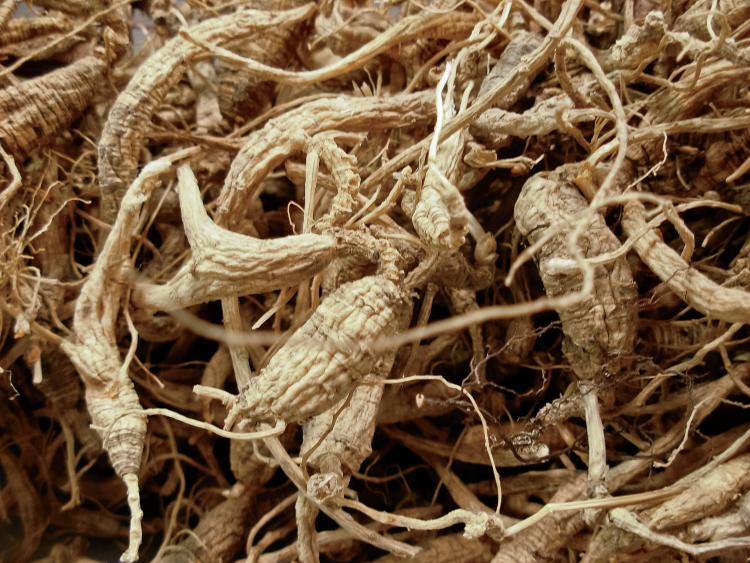Home > Kentucky > Kentucky Crops & Livestock > There’s Plenty to Root For in Kentucky’s Ginseng Exports
There’s Plenty to Root For in Kentucky’s Ginseng Exports

Western research has found that ginseng increases blood flow and memory function, and can be used as an aphrodisiac. In the Far East, people drop ginseng roots into teas, tinctures and soups to cure a variety of ailments.
Kentucky is one of 19 states with a wild ginseng program in place, thanks to the Commonwealth having an abundance of forested habitat that is ideal for growing the plant. In fact, eastern Kentucky is regarded as one of the most prominent areas in the United States for ginseng to flourish.
“Daniel Boone was actually an early trader of wild ginseng,” says Jonathan Van Balen, import/export adviser with the Kentucky Department of Agriculture. “Today, the plant is especially popular in Asia but overharvesting there has made it increasingly rare, so Kentucky is exporting ginseng to countries like China, Hong Kong and South Korea. We have a specific program in place to monitor exports because we don’t want overharvesting to occur here, too.”
Here’s the Dirt
Anyone in Kentucky can harvest wild ginseng, digging it up by the roots – the roots are the valuable part of the plant. It takes 300 ginseng roots to make one pound of dried ginseng, and there are thousands of harvesters who pick ginseng every late summer and fall. However, they must follow specific rules to ensure sustainability of the species for future generations.
“American ginseng is protected by a 1975 treaty called CITES – the Convention on International Trade in Endangered Species of Wild Fauna and Flora,” says Anna Lucio, Kentucky Department of Agriculture marketing specialist. “The treaty makes sure that ginseng isn’t overharvested in a way that is detrimental to its overall survival.”
Seven Years to Mature
Regulations state that ginseng roots can’t be picked in Kentucky until the leaves have three prongs, indicating that the plant is at least five years old. Once picked, berries from every uprooted plant must be replanted by hand within 50 feet of the harvested plant. It takes 18 months for a seedling to germinate, and a plant becomes fully mature in 7-10 years.
“The picking season is Sept. 1 to Dec. 1, and harvesters can sell green (moist) roots beginning Sept. 1, but can’t sell dried ginseng until Sept. 15,” Lucio says. “Dried ginseng sales can then occur through March 31. The Asian marketplace is huge for ginseng, and Kentucky can be an exporter for years to come, but everyone needs to obey the rules and regulations.”
150 Ginseng Dealers
Lucio says once roots are obtained by harvesters, they can only sell ginseng to authorized Kentucky ginseng export dealers. All dealers must obtain a license from the Department of Agriculture that allows them to export the product.
“The Kentucky Ag Department has a good-stewardship list of about 150 active licensed dealers on our website,” she says. “They are the only individuals allowed to take ginseng outside the borders of Kentucky and the United States. It’s a complicated export product, and we don’t really keep total sales figures, but the ginseng market is getting bigger all the time.”



